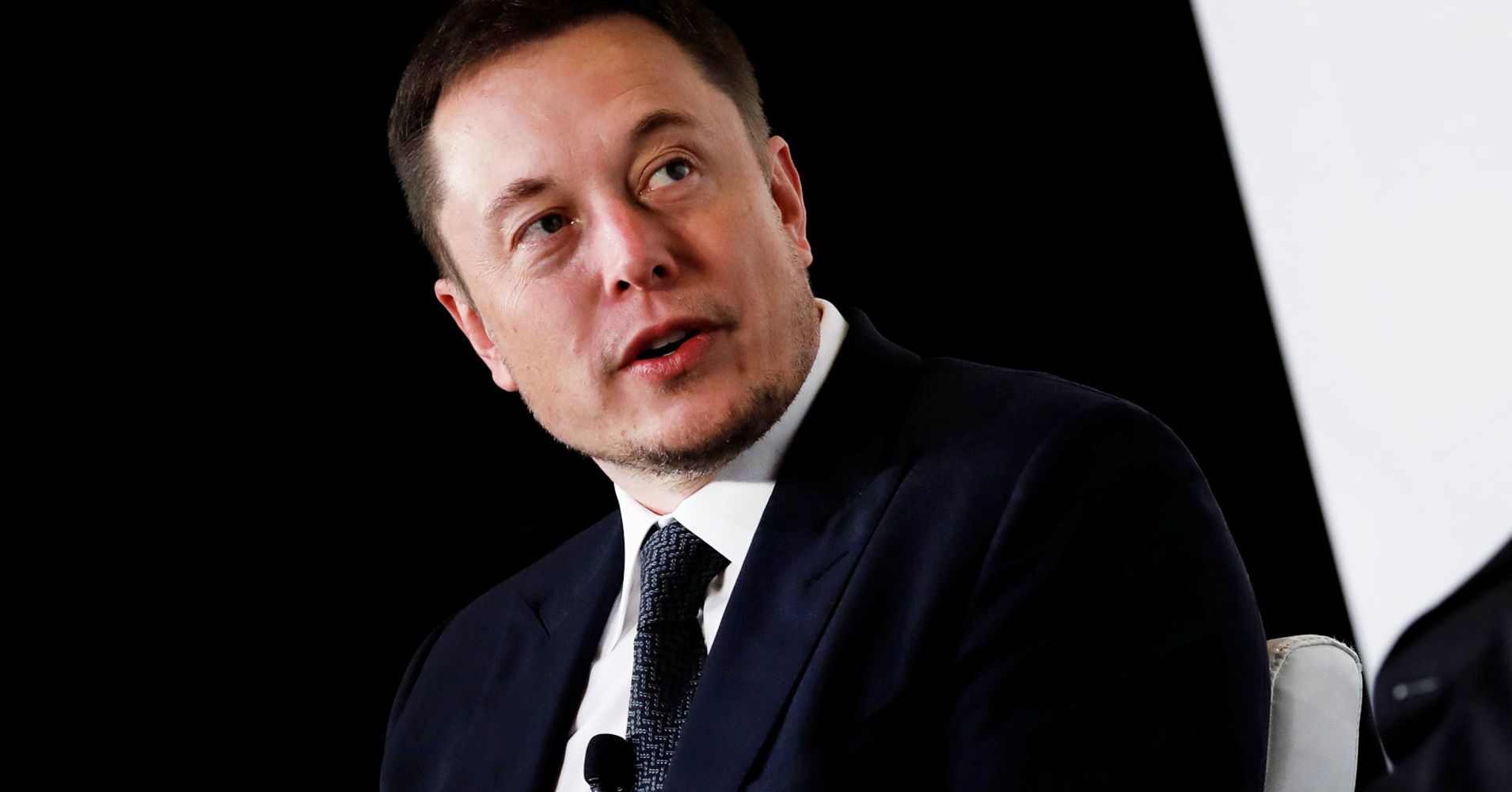

News
Elon Musk is trying to help solve the Flint Water Crisis
After building a mini-submarine to aid in the rescue attempt of the members of the Wild Boar soccer team in Thailand, Elon Musk is now flexing his philanthropic muscles towards a long-standing issue in the United States — the Flint Water Crisis.
Musk previously noted on Twitter that he has already been helping out the citizens of Flint. Spurred on by some Flint residents and activists for the city, however, Musk opted to take a more hands-on approach. The Tesla and SpaceX CEO promptly coordinated with individuals testing the contamination levels of the city’s water system, and by Wednesday, Musk has provided an email address, flint@x.com, where residents can send the results of their water’s ppm (parts per million) and ppb (parts per billion) levels.
Musk’s pledge to help the people of Flint has mostly been met positively by the online community, with several of his followers even offering to lend a hand to a “barnstorming weekend” aimed at installing water filters in the homes of the city’s residents. Musk also reacted favorably to the idea of utilizing Flint’s local plumbers to help in the initiative. Despite being in China to discuss Tesla’s plans of building Gigafactory 3 in Shanghai, Musk further stated that he would call Flint Mayor Karen Weaver about plans to address the city’s water problems.
Gathering input this week, will begin taking action next week and let people know how they can help
— Elon Musk (@elonmusk) July 12, 2018
Just like his efforts to help in the Thailand cave rescue operations, Musk’s pledge to help the city of Flint became a target for his staunch critics online. Key Flint activist Mari Copeny, better known as Little Miss Flint due to her letter to then-president Barack Obama about the ongoing water crisis, clarified Musk’s involvement, however, stating that the city is appreciative of the serial tech entrepreneur’s efforts to help.
Hey world. Let’s set the record straight. My team has been working with @elonmusk and his team for over a week to figure out the best solution to help #Flint with the #FlintwaterCrisis
Extremely grateful for him and all he has done so far.— Mari Copeny (@LittleMissFlint) July 12, 2018
The Flint Water Crisis started in April 2014, after the city’s drinking water source was changed from Lake Huron and the Detroit River to the much cheaper Flint River. Insufficient water treatment caused lead to be leached from lead water pipes into the residents’ drinking water. Lead pipes are viable pipes for water systems, provided that corrosion inhibitors are used to prevent lead from contaminating the water. A common corrosion inhibitor is orthophosphate, which forms low-solubility complexes with the lead in the pipes. Orthophosphates were used in Flint’s systems when the drinking water was coming from Detroit, but when the shift to the Flint River was conducted, no orthophosphate or any other anti-corrosion inhibitors were used. The absence of these inhibitors is behind the harrowing images of rust-colored water coming from Flint’s water supply.
The lead-contaminated water caused several grave problems for Flint’s residents. Between 6,000 to 12,000 children from Flint have been exposed to drinking water with high levels of lead, which could result to serious health problems. The percentage of Flint children with elevated blood-lead levels is estimated to have risen from about 2.5% in 2013 to as much as 5% in 2015 as well. An outbreak of Legionnaires’ Disease, a form of atypical pneumonia with no known vaccine, also resulted in 10 fatalities. The Legionnaires’ outbreak is linked to Flint’s contaminated water supply.

A comparison between Flint’s water coming from the Flint River and the Detroit River. [Credit: Occupy]
The Flint Water Crisis has resulted in several lawsuits being filed against government officials, many of which were accused of mismanaging the situation. Since the water crisis’ peak, however, the Michigan Department of Environmental Quality (MDEQ) has stated that the lead content of Flint’s water has fallen below the federal limit. As of April 2018, the MDEQ issued a statement assuring Flint’s residents that the city’s water quality “has been restored.” Regardless of this, however, many Flint residents remain skeptical that their water is now safe, especially considering that the replacement of the contaminated lead pipes is still ongoing. In this sense, Musk noted on Twitter that the planned “barnstorming” weekend in Flint would not only aim to give residents water filters for their homes; it would also attempt to fix residents’ perception of the city’s water supply.
You’re right on both counts. Most houses in Flint have safe water, but they’ve lost faith in govt test results. Some houses are still outliers. Will organize a weekend in Flint to add filters to those houses with issues & hopefully fix perception of those that are actually good.
— Elon Musk (@elonmusk) July 11, 2018
While Elon Musk’s recent philanthropic ventures are attracting more attention than usual, the SpaceX and Tesla CEO’s humanitarian efforts have actually been going on for some time. It should be noted that Tesla’s big battery in South Australia was started after Musk became aware of the power crisis in the region. After Hurricane Maria ravaged Puerto Rico, Musk also promptly sent a team to help the island nation get back on its feet. As of Musk’s latest update, he noted that there are currently 11,000 projects underway in Puerto Rico.
Elon Musk
Tesla begins expanding Robotaxi access: here’s how you can ride
You can ride in a Tesla Robotaxi by heading to its website and filling out the interest form. The company is hand-picking some of those who have done this to gain access to the fleet.

Tesla has begun expanding Robotaxi access beyond the initial small group it offered rides to in late June, as it launched the driverless platform in Austin, Texas.
The small group of people enjoying the Robotaxi ride-hailing service is now growing, as several Austin-area residents are receiving invitations to test out the platform for themselves.
The first rides took place on June 22, and despite a very small number of very manageable and expected hiccups, Tesla Robotaxi was widely successful with its launch.
Tesla Robotaxi riders tout ‘smooth’ experience in first reviews of driverless service launch
However, Tesla is expanding the availability of the ride-hailing service to those living in Austin and its surrounding areas, hoping to gather more data and provide access to those who will utilize it on a daily basis.
Many of the people Tesla initially invited, including us, are not local to the Austin area.
There are a handful of people who are, but Tesla was evidently looking for more stable data collection, as many of those early invitees headed back to where they live.
The first handful of invitations in the second round of the Robotaxi platform’s Early Access Program are heading out to Austin locals:
I just got a @robotaxi invite! Super excited to go try the service out! pic.twitter.com/n9mN35KKFU
— Ethan McKanna (@ethanmckanna) July 1, 2025
Tesla likely saw an influx of data during the first week, as many traveled far and wide to say they were among the first to test the Robotaxi platform.
Now that the first week and a half of testing is over, Tesla is expanding invites to others. Many of those who have been chosen to gain access to the Robotaxi app and the ride-hailing service state that they simply filled out the interest form on the Robotaxi page of Tesla’s website.
That’s the easiest way you will also gain access, so be sure to fill out that form if you have any interest in riding in Robotaxi.
Tesla will continue to utilize data accumulated from these rides to enable more progress, and eventually, it will lead to even more people being able to hail rides from the driverless platform.
With more success, Tesla will start to phase out some of the Safety Monitors and Supervisors it is using to ensure things run smoothly. CEO Elon Musk said Tesla could start increasing the number of Robotaxis to monitors within the next couple of months.
Elon Musk
Tesla analyst issues stern warning to investors: forget Trump-Musk feud

A Tesla analyst today said that investors should not lose sight of what is truly important in the grand scheme of being a shareholder, and that any near-term drama between CEO Elon Musk and U.S. President Donald Trump should not outshine the progress made by the company.
Gene Munster of Deepwater Management said that Tesla’s progress in autonomy is a much larger influence and a significantly bigger part of the company’s story than any disagreement between political policies.
Munster appeared on CNBC‘s “Closing Bell” yesterday to reiterate this point:
“One thing that is critical for Tesla investors to remember is that what’s going on with the business, with autonomy, the progress that they’re making, albeit early, is much bigger than any feud that is going to happen week-to-week between the President and Elon. So, I understand the reaction, but ultimately, I think that cooler heads will prevail. If they don’t, autonomy is still coming, one way or the other.”
BREAKING: GENE MUNSTER SAYS — $TSLA AUTONOMY IS “MUCH BIGGER” THAN ANY FEUD 👀
He says robotaxis are coming regardless ! pic.twitter.com/ytpPcwUTFy
— TheSonOfWalkley (@TheSonOfWalkley) July 2, 2025
This is a point that other analysts like Dan Ives of Wedbush and Cathie Wood of ARK Invest also made yesterday.
On two occasions over the past month, Musk and President Trump have gotten involved in a very public disagreement over the “Big Beautiful Bill,” which officially passed through the Senate yesterday and is making its way to the House of Representatives.
Musk is upset with the spending in the bill, while President Trump continues to reiterate that the Tesla CEO is only frustrated with the removal of an “EV mandate,” which does not exist federally, nor is it something Musk has expressed any frustration with.
In fact, Musk has pushed back against keeping federal subsidies for EVs, as long as gas and oil subsidies are also removed.
Nevertheless, Ives and Wood both said yesterday that they believe the political hardship between Musk and President Trump will pass because both realize the world is a better place with them on the same team.
Munster’s perspective is that, even though Musk’s feud with President Trump could apply near-term pressure to the stock, the company’s progress in autonomy is an indication that, in the long term, Tesla is set up to succeed.
Tesla launched its Robotaxi platform in Austin on June 22 and is expanding access to more members of the public. Austin residents are now reporting that they have been invited to join the program.
Elon Musk
Tesla surges following better-than-expected delivery report
Tesla saw some positive momentum during trading hours as it reported its deliveries for Q2.

Tesla (NASDAQ: TSLA) surged over four percent on Wednesday morning after the company reported better-than-expected deliveries. It was nearly right on consensus estimations, as Wall Street predicted the company would deliver 385,000 cars in Q2.
Tesla reported that it delivered 384,122 vehicles in Q2. Many, including those inside the Tesla community, were anticipating deliveries in the 340,000 to 360,000 range, while Wall Street seemed to get it just right.
Tesla delivers 384,000 vehicles in Q2 2025, deploys 9.6 GWh in energy storage
Despite Tesla meeting consensus estimations, there were real concerns about what the company would report for Q2.
There were reportedly brief pauses in production at Gigafactory Texas during the quarter and the ramp of the new Model Y configuration across the globe were expected to provide headwinds for the EV maker during the quarter.
At noon on the East Coast, Tesla shares were up about 4.5 percent.
It is expected that Tesla will likely equal the number of deliveries it completed in both of the past two years.
It has hovered at the 1.8 million mark since 2023, and it seems it is right on pace to match that once again. Early last year, Tesla said that annual growth would be “notably lower” than expected due to its development of a new vehicle platform, which will enable more affordable models to be offered to the public.
These cars are expected to be unveiled at some point this year, as Tesla said they were “on track” to be produced in the first half of the year. Tesla has yet to unveil these vehicle designs to the public.
Dan Ives of Wedbush said in a note to investors this morning that the company’s rebound in China in June reflects good things to come, especially given the Model Y and its ramp across the world.
He also said that Musk’s commitment to the company and return from politics played a major role in the company’s performance in Q2:
“If Musk continues to lead and remain in the driver’s seat, we believe Tesla is on a path to an accelerated growth path over the coming years with deliveries expected to ramp in the back-half of 2025 following the Model Y refresh cycle.”
Ives maintained his $500 price target and the ‘Outperform’ rating he held on the stock:
“Tesla’s future is in many ways the brightest it’s ever been in our view given autonomous, FSD, robotics, and many other technology innovations now on the horizon with 90% of the valuation being driven by autonomous and robotics over the coming years but Musk needs to focus on driving Tesla and not putting his political views first. We maintain our OUTPERFORM and $500 PT.”
Moving forward, investors will look to see some gradual growth over the next few quarters. At worst, Tesla should look to match 2023 and 2024 full-year delivery figures, which could be beaten if the automaker can offer those affordable models by the end of the year.
-

 Elon Musk2 days ago
Elon Musk2 days agoTesla investors will be shocked by Jim Cramer’s latest assessment
-

 News1 week ago
News1 week agoTesla Robotaxi’s biggest challenge seems to be this one thing
-

 Elon Musk2 weeks ago
Elon Musk2 weeks agoElon Musk slams Bloomberg’s shocking xAI cash burn claims
-

 News2 weeks ago
News2 weeks agoTexas lawmakers urge Tesla to delay Austin robotaxi launch to September
-

 Elon Musk1 week ago
Elon Musk1 week agoFirst Look at Tesla’s Robotaxi App: features, design, and more
-

 Elon Musk2 weeks ago
Elon Musk2 weeks agoTesla Robotaxis are becoming a common sight on Austin’s public roads
-

 Elon Musk2 weeks ago
Elon Musk2 weeks agoxAI’s Grok 3 partners with Oracle Cloud for corporate AI innovation
-

 Elon Musk2 weeks ago
Elon Musk2 weeks agoSpaceX President meets India Minister after Starlink approval














